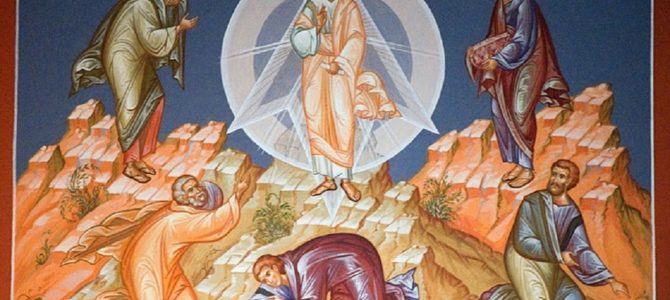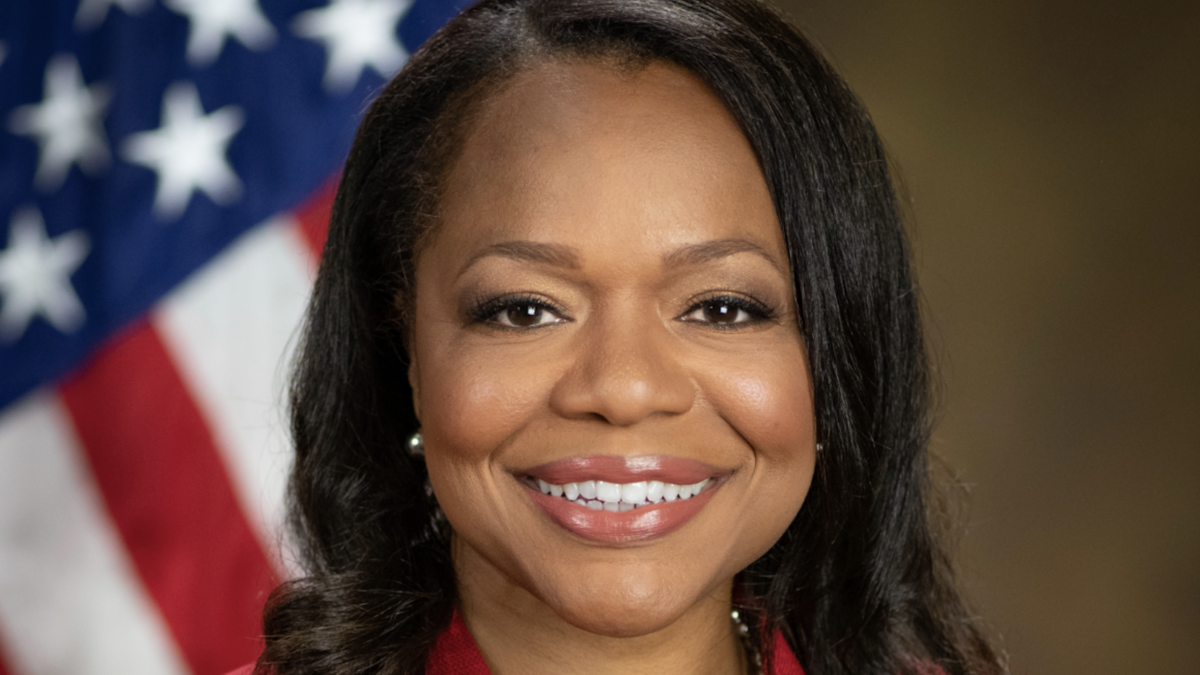
Lent—the penitential season of the church year that many Christians observe in the weeks leading up to Holy Week and Easter—is quickly approaching. Lent begins with Ash Wednesday, celebrated this year on Feb. 26. For some Ash Wednesday is significant mainly because it signals the end of Mardi Gras. The roots of Mardi Gras, or Fat Tuesday, remain unclear, but what is clear is that today it’s essentially an excuse for a party.
While the world parties, many in Christendom participate in a different kind of party the Sunday before Ash Wednesday. Protestant churches that follow what is known as the Revised Common Lectionary—a three-year cycle of appointed readings and prayers for liturgical worship—will celebrate the Feast of the Transfiguration on Feb. 23. Those in the Roman Catholic, Orthodox, and some other traditions won’t celebrate it until Aug. 6, and Protestants who follow the One-Year Lectionary celebrated it on Feb. 2.
The Transfiguration of Jesus is recounted in the gospels of Matthew, Mark, and Luke, which are known as the “synoptic” gospels because of their narrative similarities. Three-Year Lectionary churches will read Matthew’s account of the event this year:
Now after six days Jesus took Peter, James, and John his brother, led them up on a high mountain by themselves; and He was transfigured before them. His face shone like the sun, and His clothes became as white as the light. And behold, Moses and Elijah appeared to them, talking with Him. Then Peter answered and said to Jesus, ‘Lord, it is good for us to be here; if You wish, let us make here three tabernacles: one for You, one for Moses, and one for Elijah.’
While he was still speaking, behold, a bright cloud overshadowed them; and suddenly a voice came out of the cloud, saying, ‘This is My beloved Son, in whom I am well pleased. Hear Him!’ And when the disciples heard it, they fell on their faces and were greatly afraid. But Jesus came and touched them and said, ‘Arise, and do not be afraid.’ When they had lifted up their eyes, they saw no one but Jesus only.
Now as they came down from the mountain, Jesus commanded them, saying, ‘Tell the vision to no one until the Son of Man is risen from the dead.’
And His disciples asked Him, saying, ‘Why then do the scribes say that Elijah must come first?’
Jesus answered and said to them, ‘Indeed, Elijah is coming first and will restore all things. But I say to you that Elijah has come already, and they did not know him but did to him whatever they wished. Likewise the Son of Man is also about to suffer at their hands.’ Then the disciples understood that He spoke to them of John the Baptist. (Matt. 17:1-13)
Regardless of when it is celebrated, Jesus’ Transfiguration has long been seen as one of the five major milestones of his earthly life, the others being his baptism, crucifixion, resurrection, and ascension. It is a pivotal event that vividly highlights Jesus’ divinity and marks a decisive turn in His ministry as He begins His journey to the cross. Accordingly, the church fathers have much to say about it.
What the Church Fathers Say about Transfiguration
Martin Luther says that the biblical account of Jesus’ Transfiguration strengthens the Christian’s faith by providing him a glimpse of both his Savior’s resurrection and his own: “The resurrection of the dead and the future glory and brightness of our bodies are shown. For this was something very remarkable, that Christ was transfigured while yet in the mortal body, which was subject to suffering. What then shall it be, when mortality shall have been swallowed up, and nothing shall remain but immortality and glory?”
John Calvin notes in his commentary on Matthew’s Transfiguration account that the presence of Moses and Elijah demonstrates God’s ability to “restore the dead to life at his pleasure, whenever he sees it to be necessary.”
St. Thomas Aquinas writes, in “Summa Theologiae,” that God brought Moses and Elijah to the mountain, in part, “because, as Luke says (9:31), ‘they spoke’ with Him ‘of His decease that He should accomplish in Jerusalem,’ i.e. of His Passion and death. Therefore, ‘in order to strengthen the hearts of His disciples with a view to this,’ He sets before them those who had exposed themselves to death for God’s sake.”
John Wesley highlights the “rapturous surprise” of the apostles, noting Peter’s suggestion of three tents, not six, “because the apostles desired to be with their Master.” And Luther, again, observes that it’s not only Jesus, but the other members of the Trinity who appear at the Transfiguration “to strengthen the believers; namely, Christ in his transfigured form, the Father in the voice, and the Holy Ghost in the bright cloud.”
The Church’s Music for Transfiguration
Those who have a passion for church music have a special fondness for Transfiguration. As if the sheer power of the biblical account weren’t enough, the music and hymnody are some of the most profound and beautiful the church has to offer.
The hymn “O Wondrous Type! O Vision Fair,” sung to the English tune DEO GRACIAS, is perhaps one of the best known of all Transfiguration hymns. The hymn narrates, in five stanzas, the appearance of Christ, Moses, and Elijah to Peter, James, and John. Listen to it here.
The hymn “’Tis Good, Lord, to Be Here” echoes Peter’s desire to stay on the mountain with Jesus but acknowledges that the faithful are called to something else: “’Tis good, Lord to be here! Yet we may not remain; But since Thou bidst us leave the mount, Come with us to the plain.”
“Alleluia, Song of Gladness” notes the transition from the festive time of Epiphany, and the “mountaintop” experience of Transfiguration, to the more somber time of Lent: “Alleluia cannot always be our song while here below; Alleluia, our transgressions make us for a while forgo.” Some congregations observe a ritual “burying” of the alleluias at this time of the church year, putting away spoken, sung, and visual alleluias for the season of Lent so their return on Easter will heighten worshipers’ expression of joy at Christ’s resurrection.
“Christ Upon the Mountain Peak” (also known as “Jesus on the Mountain Peak”) emphasizes Christ’s divine nature as the Son of God: “This is God’s beloved Son! Law and prophets sing before Him, First and Last and only One. All creation shall adore Him! Alleluia!”
With Transfiguration’s emphasis on Jesus’ glory and shining face, some churches sing the contemporary classic “Shine, Jesus, Shine” by Graham Kendrick. Others may find “How Lovely Is Thy Dwelling Place” (based on Psalm 84) from Johannes Brahms’ “Requiem” to be well-suited to the day.
A Party for the Ages
What more reason do Christians need to have a party? Peter, seeming to understand that this is a party for the ages, suggests pitching a few tents and keeping the party going. But as Luke notes in his account, Peter did not know what he was saying. On the other hand, he did know what he was saying when, in his second epistle, he recalled the Transfiguration event:
“For we did not follow cleverly devised myths when we made known to you the power and coming of our Lord Jesus Christ, but we were eyewitnesses of his majesty. For when he received honor and glory from God the Father, and the voice was borne to him by the Majestic Glory, ‘This is my beloved Son, with whom I am well pleased,’ we ourselves heard this very voice borne from heaven, for we were with him on the holy mountain.” (2 Peter 1:16-18)
Whenever it is celebrated—February, August, or another time—the Feast of the Transfiguration is a reminder that the faithful are not called to remain safely ensconced on the mountain with Jesus but to go out into the world, telling all who will hear of God’s love for His creation. In doing so, God’s people turn, with Jesus, toward the cross, for to rise with Him means first to die with Him. Before the Father asks His children to do that, though, He equips them with His Word, namely Jesus, saying, “Listen to Him.”
Both Transfiguration and Lent are fresh opportunities to turn in the direction of the Savior’s voice. As Lent approaches, go ahead and enjoy—in safe and healthy ways—the fun and feasting of Mardi Gras. But far more important, don’t miss this opportunity to go to church, listen to Jesus, and die and rise with Him.









